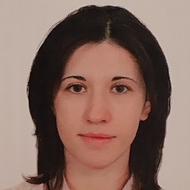- A
- A
- A
- ABC
- ABC
- ABC
- А
- А
- А
- А
- А
- HSE University
- Faculties
- Faculty of Economic Sciences
- School of Finance
- News
- 20th EURAM Annual Conference
-
The School
- ABOUT
- Staff Members
- Doctoral Students
- Joint Departments with Partner Companies
-
RESEARCH ACTIVITIES
- Laboratories
- Series “Advanced Studies in Emerging Market’s Finance” at Springer Nature o Networking with International Academic Associations
- Networking with International Academic Associations
- Journal of Corporate Finance Research
- Research Seminars
- International Conference «ESG Corporate Dynamics: the Challenges for Emerging Capital Markets»
- International Seminar “Systemic Risks in the Financial Sector”
- Yasin (April) International Academic Conference
- International PhD Workshop
- Publications by School of Finance Faculty
-
RESEARCH WORKING GROUPS
- Research Working Group "Innovations in the Banking Sector, its Financial Stability and Prudential Regulation"
- BUSINESS EDUCATION
- Networking with Business Associations
- Networking with Professional Associations
-
DATABASES
-
119049 Moscow, Russia
11 Pokrovskiy boulevard, room S629
Phone:
+7 (495) 772-95-90*27447, *27947, *27190
+7 (495) 916-88-08 (Master’s Programme Corporate Finance)
- Email: df@hse.ru
Head of Corporate Finance Research Center, Dr., tenured professor
The HSE School of Finance is the leading Russian competence center in the field of corporate finance, business valuation, banking, stock market, risk management and insurance, accounting and audit.
HSE is the first Russian university in the global ranking "QS - World University Rankings by subject", 2022 in the subject area of Accounting and Finance. Moreover, the university is the 1-st in the rating "THE World University Rankings by subject" in the subject area of Business & Management Studies, 2022
Edited by: A. M. Karminsky, Mikhail Stolbov.
Palgrave Macmillan, 2024.
The Journal of Risk Model Validation. 2026. Vol. 20. No. 1. P. 1-24.
Badr I., Rawnaa Ibrahim, Hussainey K.
In bk.: Opportunities and Risks in AI for Business Development. Vol. 2: 546. Bk. Opportunities and Risks in AI for Business Development. Prt. 636. Springer, 2025. P. 385-399.
SERIES: FINANCIAL ECONOMICS. WP BRP 60/FE/2017. НИУ ВШЭ, 2025

20th EURAM Annual Conference
Also the paper WHO CONTRIBUTES TO INNOVATIONS? was been presented on this conference by Elena Karnoukhova, Anastasia Stepanova.
Annotation to report (D. Korablev, I. Ivashkovskaya and A. Stepanova):
The paper advances the line in research of human-side of corporate governance by studying the impact of board capital on financial performance in specific environment of emerging capital market with relatively short history of corporate governance. We draw on the concept of board capital suggested by Hillman and Dalziel (2003), Haynes and Hillman (2010) as a set of heterogenous personal characteristics of directors to be able to execute their functions. We use a sample of 100 publicly traded firms in Russia during the period 2009-2017 with dynamic panel data. Our tests are based on unique data on personal characteristics of directors collected manually. We apply both common factor analysis and index approach to approximate board capital measurer with the use of taken board characteristics. To control the models for endogeneity, we used generalized method of moments with the lags of independent variables. Our results show that board capital indeed has significant and positive impact on company’s future operating performance as well as on company’s current market valuation. We further find that the presence of powerful CEO and weak board independence reduce positive impact of board capital on financial performance in large scale Russian corporations.
Annotation to paper (Elena Karnoukhova, Anastasia Stepanova):
Innovations are a major driver of the global economy. Recently, the typical major owner become an institutional investor. Moreover, the stakes of institutional owners have increased, which lead to the ownership concentration among types. Traditional investment managers, banks, insurance companies and hedge funds have different goals and strategies, so their roles in firms differ significantly. In this article we analyze the influence of different types of investors on the innovation input and output of Russell 3000 index US companies. This research uses a GLS models to suggest on 17346 firm-year observations for period 2004–11 that different types of investors have different effects on the innovative performance of US companies. By focusing on the ownership concentration, we demonstrate first, that grey investors decrease innovative output; second, that passive independent institutions enhance innovation input and output in virtue of their active monitoring and long-term investment horizons; third, that the concentration of the industry, size and financial constraints play an important role in the innovative performance."
- About
- About
- Key Figures & Facts
- Sustainability at HSE University
- Faculties & Departments
- International Partnerships
- Faculty & Staff
- HSE Buildings
- HSE University for Persons with Disabilities
- Public Enquiries
- Studies
- Admissions
- Programme Catalogue
- Undergraduate
- Graduate
- Exchange Programmes
- Summer Schools
- Semester in Moscow
- Business Internship
- © HSE University 1993–2026 Contacts Copyright Privacy Policy Site Map
- Edit




